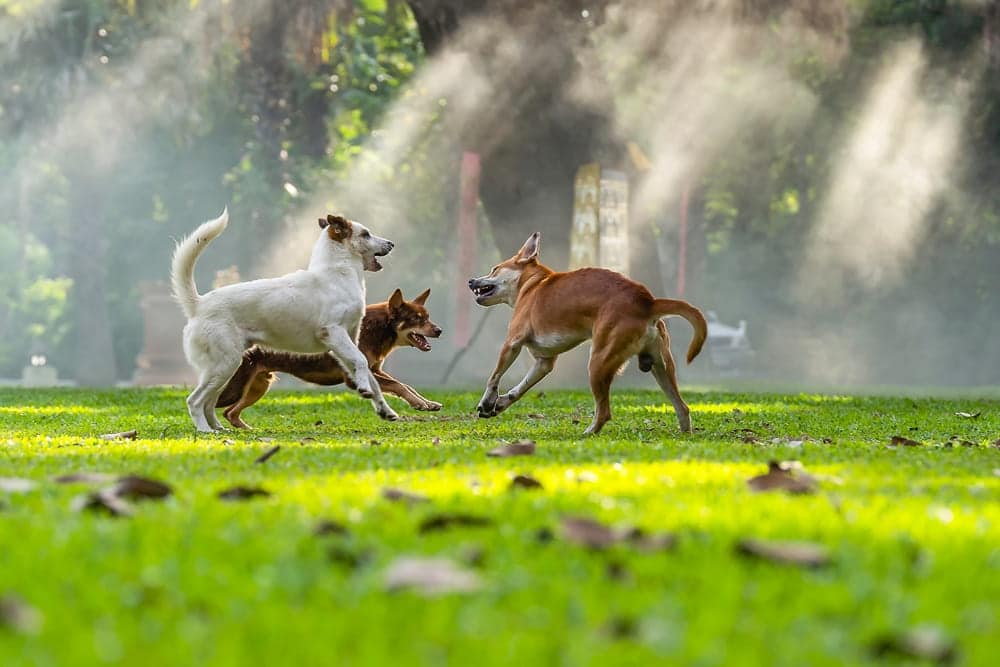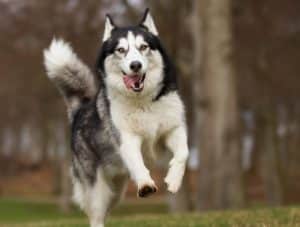Addressing Common BEHAVIOUR Issues Biting Barking And Jumping -Dog owners often misunderstand and misinterpret behaviour problems in their pets.
Here’s a breakdown of your excellent guide to common behavioral issues in dogs, along with key takeaways and insights for owners.
Key Takeaways
- Understanding is the First Step: Most behavioral problems have a root cause, not just “bad dog” syndrome.
- Misinterpretation is Common: Owners often mistake normal dog instincts (chewing, barking) for bad behavior.
- Prevention is Key: Good training, mental stimulation, and exercise can prevent many issues.
- Most Problems Are Fixable: With patience and the right approach, even severe issues can be improved.
- Seek Help When Needed: Trainers can diagnose complex problems and provide safe solutions.
Addressing Common Issues
You provide clear guidance for a range of frustrating behaviors:
- Barking: Analyze why your dog is barking (boredom, fear, etc.) and address the cause, not just the noise.
- Chewing: Provide safe chew toys, redirect to appropriate objects, and address boredom or anxiety if those are the root causes.
- Digging: Understanding the motivation (instinct, boredom, seeking cool ground) is crucial for a solution.
- Inappropriate Elimination: Rule out medical issues first, then focus on consistent housetraining and management.
- Chasing: This taps into prey drive. Avoid off-leash walks until you’ve mastered recall and impulse control.
- Jumping: Ignore jumping and reward calm greetings to change the behavior.
- Biting: Puppies need bite inhibition training. Adult dogs may bite out of fear, pain, or resource guarding and need professional help.
- Aggression: A serious issue often rooted in fear or past experiences. Professional guidance is essential for safety.
Important Reminders
Your guide makes it clear that:
- Punishment Rarely Works: It damages your bond with the dog and can make problems worse.
- Each Dog is Unique: Consider the dog’s age, breed, personality, and the context of their behavior for the best treatment plan.
Let’s Talk About Your Dog! For the most tailored advice, let’s discuss:
- What breed is your dog, and how old are they?
- What specific behaviors are most challenging for you?
- Can you identify any triggers or patterns to their behavior?
- What training methods have you tried so far, and how did your dog respond?
Remember, you’re not alone! With the right approach, understanding, and a bit of patience, most behavioral challenges can be improved, making life with your dog happier and less stressful for both of you.
Excessive Barking Behavior:
All dogs, with rare exceptions, make some sounds. They bark, howl, whine, grumble, squeak, and sometimes do all this together and very loudly.
When the level or quantity of noise they create begins to exceed imaginable norms, this behavior becomes problematic.
As you can see, there are no serious reasons for manual therapy with a leash on the list, and if desired, most often you can cope without resorting to punishment.
For example, take up general obedience and try to master the “Voice” and “Quiet!” commands: in some cases, they help control problem behavior. Attention to detail is essential to correcting your dog’s excessive barking.
Chewing Behaviors of a Dog:
Dogs not only bark, but also chew, and they chew everything that is not forbidden to chew, and sometimes even what is forbidden.
Many will be surprised, but in fact, chewing or gnawing various objects is a very important dog activity, literally an integral part of their life.
Massaging the dog’s soft spots with a slipper will not help solve the problem in any case. Remember the main thing: to keep the house safe and sound, you need to give the dog such intellectual and physical stress that it has no energy left to chew anything other than its food.
Leave outbursts of emotions for communication in the market. At home, it is much more effective to remove the things you need and leave the things you don’t need, so that your dog has something to use for his itchy teeth.
By the way, if you see a puppy chewing the “wrong” thing, try clapping your hands sharply and loudly, distracting his attention, and then immediately replace the object with a “chew” toy.
Digging Holes:
You know, give the dogs a chance, they would probably be happy to dig right through the Earth. Among the most common are omnipresent boredom or excess energy, anxiety or fear, hunting instinct, mother preparing a den before the birth of puppies, the desire to lie in a cold place, the desire to hide something, preparing an escape, or providing access to resources.
Living with a digger dog is not very pleasant. Still, try to determine the reason for the hobby of digging holes, and then begin to patiently work to eliminate it.
As an initial step, it would be a good idea to increase the duration of walks and the intensity of intellectual load.
Urination And Defecation In The Wrong Place:
The problem of uncleanliness, without exaggeration, is one of the most unpleasant. Not only does a dog peeing in the wrong place spoil its home, but it also makes itself and its owner persona non grata in the homes of friends.
Here it is crucial to separate the flies from the cutlets, excluding purely medical reasons. Only if the veterinarian has determined that there are no diseases should we move on to what can be called behavioral problems such as submissiveness or excessive arousal, marking territory, fear, or lack of proper daily routine.
Please note that there is no reference to age in the list: it is obvious that in puppies, uncleanliness is a natural accompaniment to the first months of life.
You shouldn’t even dream that the story with the toilet will somehow begin to develop before the puppy is 12-16 weeks old, and even this, as they say, is “not certain.”
Chasing Moving Things:
The dog’s desire to chase moving objects is nothing more than a manifestation of the hunting instinct: one must keep in mind that the dog’s visual perception gives priority to moving “victims”. The reason is clear, but the reason? Boredom and attention deficit.
Most often, it is almost impossible to stop a dog during a chase, which means there is every chance of losing it in a small accident.
If there is a problem, at least do not let the dog walk on its own and keep it on a leash all the time until you reach a closed area. Work on the “Don’t” and “Come” commands. Try a dog whistle to effectively attract your dog’s attention from a distance.
Jumping Problems:
Show me at least one person who likes it when unfamiliar dogs jump on him, get dirty with dirty paws, and tear his clothes.
I don’t know such people. And while jumping is part of a dog’s natural behavior arsenal, it doesn’t make it any less annoying.
Puppies jump up to greet their mothers. Once in a human family, they transfer this behavior without changes to relationships with others: they jump when they greet people, jump at a moment of strong excitement, or while jumping they try to snatch an object from a person’s hands. Needless to say, sometimes such actions can be downright dangerous.
There are many ways to “stop” jumping, but not all of them work. Everyone has heard recommendations like “stick out your knee”, “grab the paws” and even “push the dog away”, but for most dogs such actions send exactly the opposite signal.
Dogs Biting Behavior Problems:
Puppies explore their environment, testing their strength with their teeth, and mother dogs teach them to do this without being too rough, sternly reprimanding the children when the need arises. This helps puppies break in time and regulate their bite force.
Owners continue the mother dog’s work, teaching the puppies the importance of jaw control as they train. But age alone does not explain excessive biting.
The desire to bite may be present, but will not necessarily be associated with “aggression” as such. Among the reasons you can still find fear, are the desire to protect yourself, the desire to preserve property, pain, illness, or the hunting instinct.
Aggression Problem:
Such an unpleasant thing as aggression most often includes growling, baring teeth, attempts to attack, and, biting.
This is a much more serious problem than just a puppy’s inability to control his jaws. Its reasons are most often similar to those why a dog bites or snaps, differing only in scale.
It is important to know that any dog, regardless of breed, can show aggression. However, there is a firmly ingrained belief in society that breeds with a fighting background, those bred to do tough work, are much more likely to be aggressive towards people or other animals.
Because of such prejudices, in several countries certain breeds have been legally classified as “dangerous”, and in some, they are simply prohibited. Most experts understand that this makes little sense since breed-specific legislation is not a reasonable response to the problem.
Conclusion:
In most cases, the owner himself is to blame for the pet’s aggressiveness. Any pet requires socialization and training. If you are not confident in your abilities, do not undertake to raise a wayward breed that tends towards aggression at the genetic level.
Remember that it is much easier to deal with a disobedient dog at an early age. Do not put off learning commands for the future and instill in your pet the rules of decency from the first days of his arrival in the house.
“Understanding the nuances of effective training techniques is essential for any learning process, be it for humans or animals. In the realm of pet care, Dog Training (Course) is particularly vital as it not only shapes obedient behavior but also fosters a bond between the pet and its owner. It offers an extensive course that is cost-effective, with the entire course priced at just the equivalent of what a dog trainer might charge for a single hour ($40 to $120). It covers a wide array of behaviours including Potty Training, Lunging, Jumping, Digging, Whining, Chewing, Excessive Barking, Impulse Control, Hyperactivity, Ignoring Commands, and much more. Plus, they provide a 100% money-back guarantee if you cancel within 60 days, ensuring that your investment is risk-free.”








